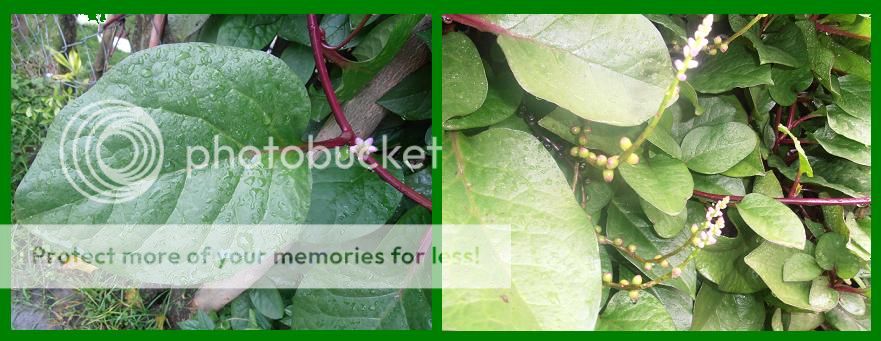Actually I am not familiar and I don’t know what is the alugbati. And I never had been taste it since I was a child. A neighbor house has alugbati plants, they’re fence is full of alugbati. One day I saw my neighbor he just harvest the alugbati and she tried to ask me to cook but I told her that I am not familiar and I don’t know how to cook. And then neighbor teaches me to cook ginisang alugbati with mongo beans, and now I know that it is easy to cook then I also get the alugbati. From now on alugbati is my favorite because it is easy to cook and based on my research it is a kind of medicinal plant.
Well, the plant is rich in saponin, iron and Vitamins A (510 IU per cup of alugbati), B and C and is a rich source of soluble fiber, which helps digestion. Saponins act as phytochemicals, which can fight off cancer. The red variety of alugbati is a good source of xanthones, an antioxidant. A cup of alugbati has only 10 calories and less than 0.5 g of fat. It also has 55 mg of calcium, 113 mg of potassium and 50 mcg of folic acid. Folic acid, which is also called folate, is one of the B vitamins that are critical for childbearing women. It helps them prevent birth defects on the neural tube, e.g., spina bifida.
Here is the photo of alugbati plants.

The house of my neighbor that full of alugbati plants in their fence.

Sorry I can’t take the photo of my menu, ginisang alugbati with monggo. I just try to cook tomorrow and I also post here my simple menu.
I did not know that you can cook and eat it, I thought it’s just a medicinal plant.
Just like you I’ve never tried the alugbati but I know that it has a nutritional value content.
I have never tried this before as well. I will see if I can find it here too.
i love alugbati.:) it is a great vegetable.
I don’t think I’ve tried alugbati as well…
I don’t even know what alugbati is.
i know that this can be cook as dish but never tried it yet
There’s also lots of alugbati plants in our area but I haven’t tried it.
honestly, i don’t like alugbati, it’s sticky 🙁
Oh I love my alugbati ang it is good with the monggo for sure. I used to plant some when we were in Kansas, but wasn’t able to save the seeds and it died. I would love to have some seeds for next year. They are good. 🙂
I’ve heard that alugbati is medicinal but this is the first time I’ve heard that it can actually be cooked as a viand.